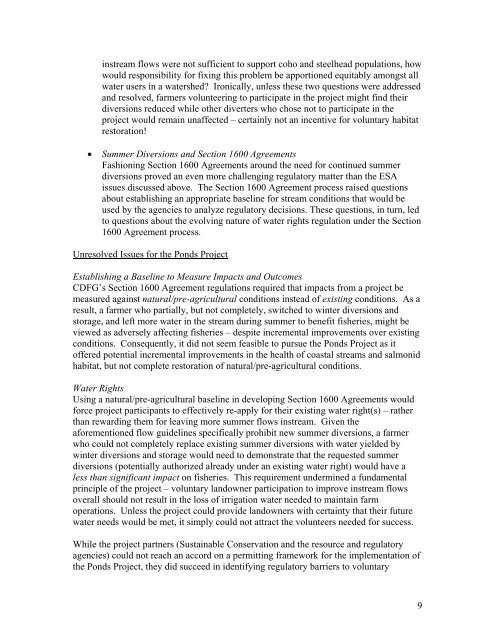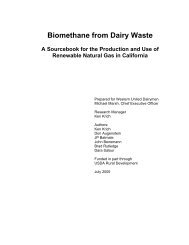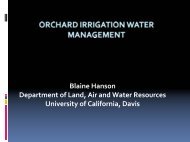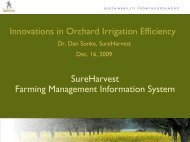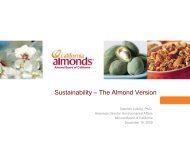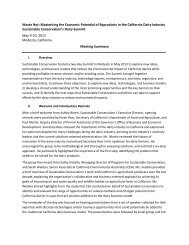THE PONDS PROJECT - Sustainable Conservation
THE PONDS PROJECT - Sustainable Conservation
THE PONDS PROJECT - Sustainable Conservation
You also want an ePaper? Increase the reach of your titles
YUMPU automatically turns print PDFs into web optimized ePapers that Google loves.
instream flows were not sufficient to support coho and steelhead populations, how<br />
would responsibility for fixing this problem be apportioned equitably amongst all<br />
water users in a watershed? Ironically, unless these two questions were addressed<br />
and resolved, farmers volunteering to participate in the project might find their<br />
diversions reduced while other diverters who chose not to participate in the<br />
project would remain unaffected – certainly not an incentive for voluntary habitat<br />
restoration!<br />
• Summer Diversions and Section 1600 Agreements<br />
Fashioning Section 1600 Agreements around the need for continued summer<br />
diversions proved an even more challenging regulatory matter than the ESA<br />
issues discussed above. The Section 1600 Agreement process raised questions<br />
about establishing an appropriate baseline for stream conditions that would be<br />
used by the agencies to analyze regulatory decisions. These questions, in turn, led<br />
to questions about the evolving nature of water rights regulation under the Section<br />
1600 Agreement process.<br />
Unresolved Issues for the Ponds Project<br />
Establishing a Baseline to Measure Impacts and Outcomes<br />
CDFG’s Section 1600 Agreement regulations required that impacts from a project be<br />
measured against natural/pre-agricultural conditions instead of existing conditions. As a<br />
result, a farmer who partially, but not completely, switched to winter diversions and<br />
storage, and left more water in the stream during summer to benefit fisheries, might be<br />
viewed as adversely affecting fisheries – despite incremental improvements over existing<br />
conditions. Consequently, it did not seem feasible to pursue the Ponds Project as it<br />
offered potential incremental improvements in the health of coastal streams and salmonid<br />
habitat, but not complete restoration of natural/pre-agricultural conditions.<br />
Water Rights<br />
Using a natural/pre-agricultural baseline in developing Section 1600 Agreements would<br />
force project participants to effectively re-apply for their existing water right(s) – rather<br />
than rewarding them for leaving more summer flows instream. Given the<br />
aforementioned flow guidelines specifically prohibit new summer diversions, a farmer<br />
who could not completely replace existing summer diversions with water yielded by<br />
winter diversions and storage would need to demonstrate that the requested summer<br />
diversions (potentially authorized already under an existing water right) would have a<br />
less than significant impact on fisheries. This requirement undermined a fundamental<br />
principle of the project – voluntary landowner participation to improve instream flows<br />
overall should not result in the loss of irrigation water needed to maintain farm<br />
operations. Unless the project could provide landowners with certainty that their future<br />
water needs would be met, it simply could not attract the volunteers needed for success.<br />
While the project partners (<strong>Sustainable</strong> <strong>Conservation</strong> and the resource and regulatory<br />
agencies) could not reach an accord on a permitting framework for the implementation of<br />
the Ponds Project, they did succeed in identifying regulatory barriers to voluntary<br />
9


